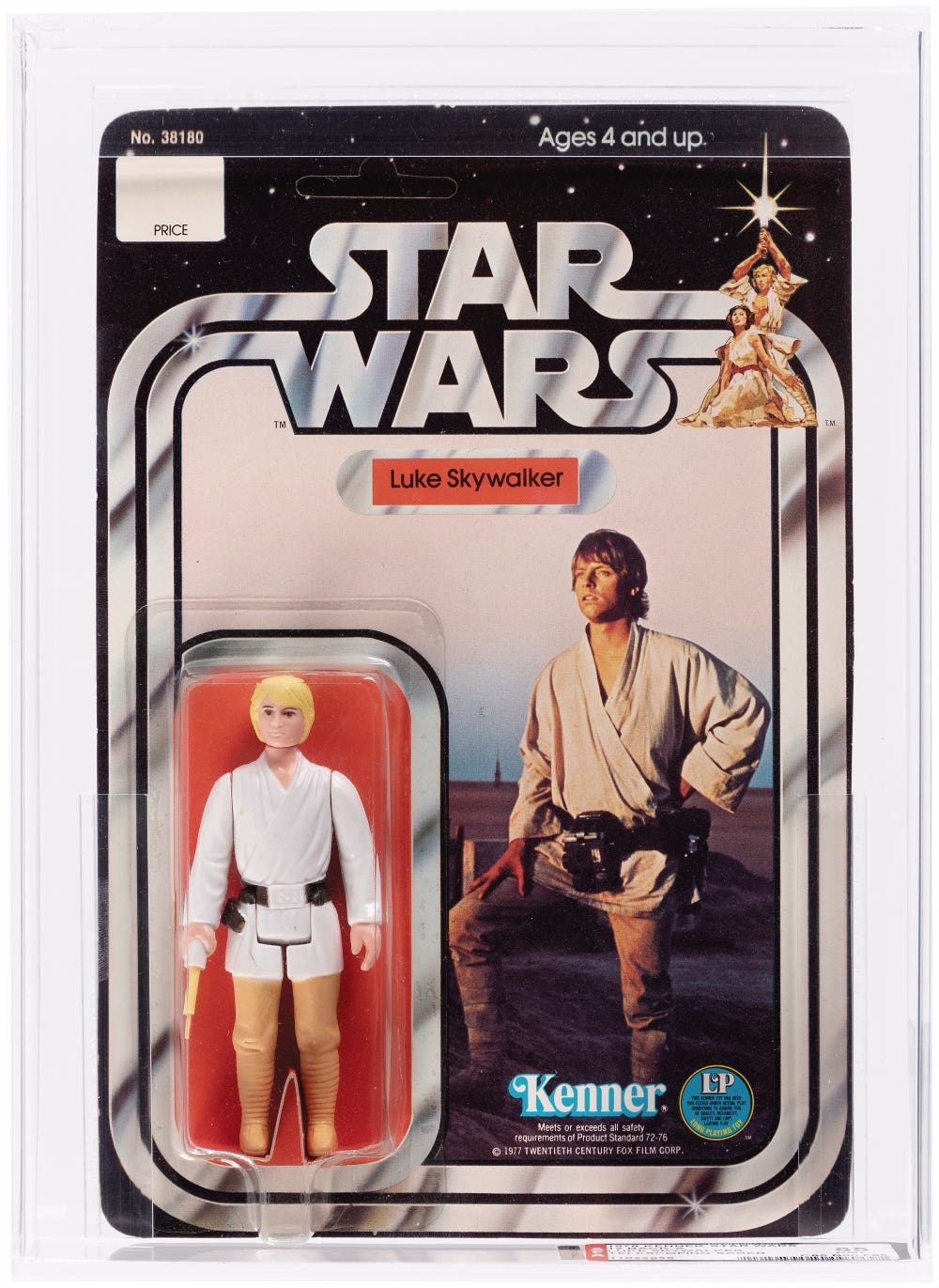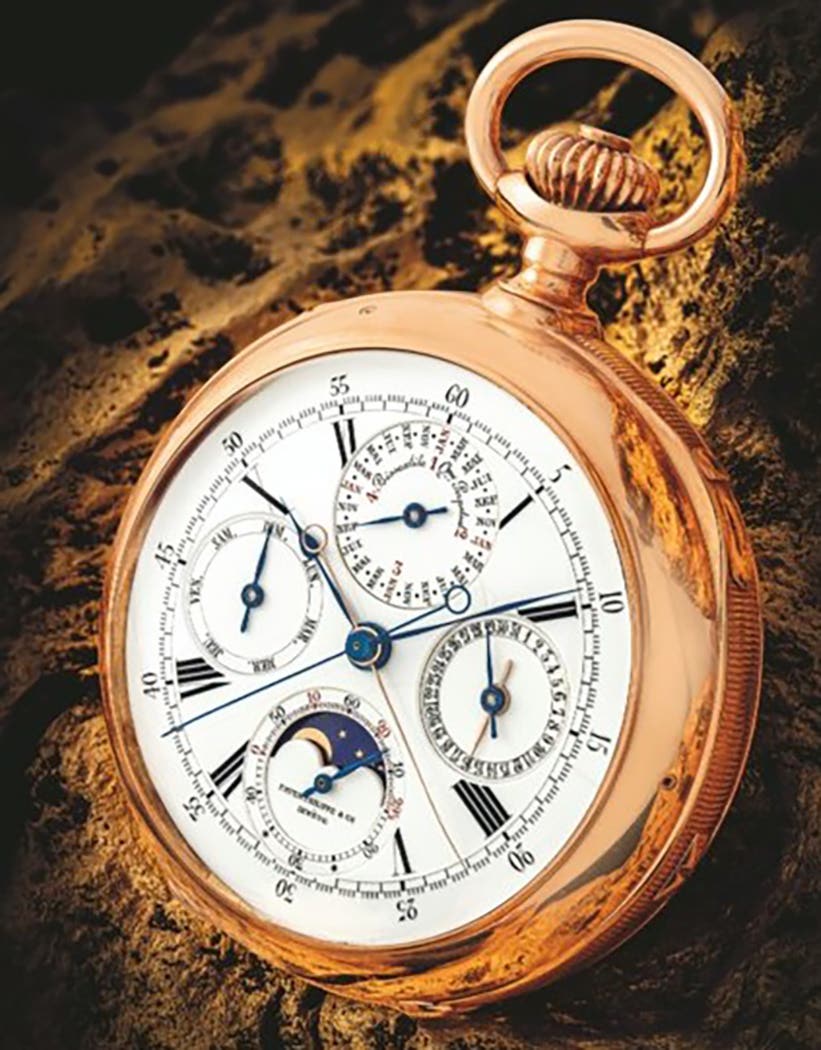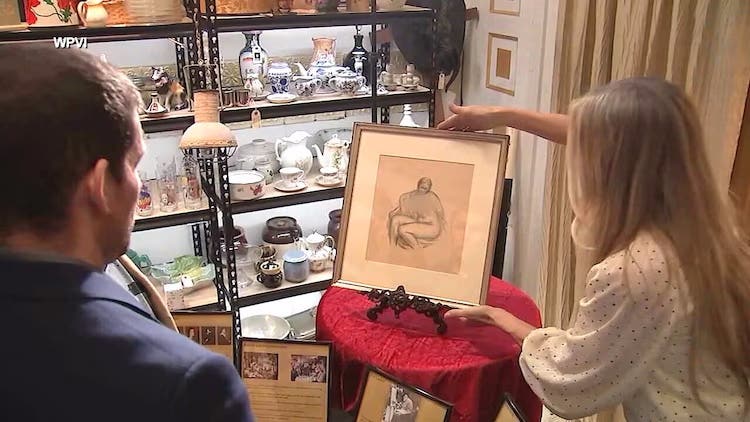Shooting Gallery Targets
Legendary collection of vintage shooting gallery targets takes center stage at Soulis Auctions in September. Early collectors Richard and Valerie Tucker embraced the targets, calling them ‘iron as art.’
LONE JACK, Missouri – Ping! Bam! Clang! Those are the sounds that once excited thrill seekers at target-shooting galleries of the late nineteenth and early twentieth centuries. Commonly seen at early midways, carnivals, saloons and other public places, shooting galleries invited all comers – young and old – to step up, take aim and hopefully hit the target and win a prize.
Each target was a sturdy, painted cast-iron form, usually replicating an animal or human figure. While originally intended as visual enticements that, over time, would become scrap metal, shooting gallery targets defied their intended lifespans.
In the 1980s they were rediscovered, as art objects. Richard and Valerie Tucker were among the earliest collectors who embraced “iron as art,” and it is their incomparable shooting gallery target collection that will take center stage at Soulis Auctions on September 26.
“The Tuckers are legendary as collectors of shooting gallery targets,” said Soulis Auctions’ owner/auctioneer Dirk Soulis. “They scoured the United States to locate the extraordinarily pieces in their collection, many of which are large and complex. A fair number of them are the only known examples of their type.
“Richard and Valerie documented their collection in a 2014 reference book they authored called Step Right Up! Classic American Target and Arcade Forms. There isn’t a finer or more extensive collection of targets anywhere. In its particular category, it is the alpha and the omega.”
Clowns were a popular subject in early carnival targets. The Tucker collection includes the only extant example of a William F. Mangels (Coney Island, New York) cast-iron light-up clown target known as “Rowdy.” Monumental in size, measuring 26 by 19.5 inches, this target undoubtedly would have been the centerpiece of a shooting gallery display. It appeared in multiple Mangels catalogs and is depicted in the 2002 book American Vernacular by Maresca/Ricco. It comes to auction with a $30,000-$40,000 estimate.
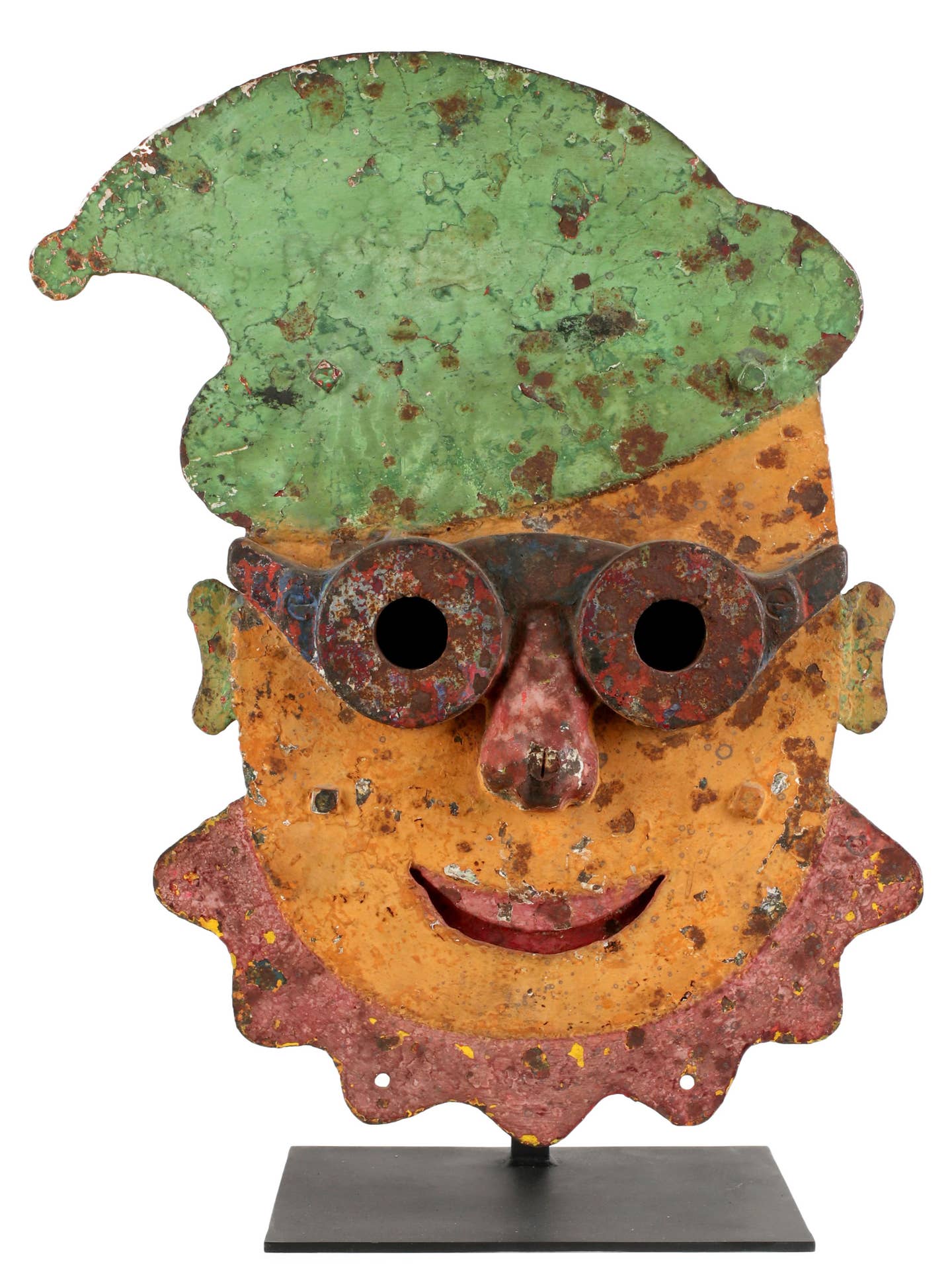
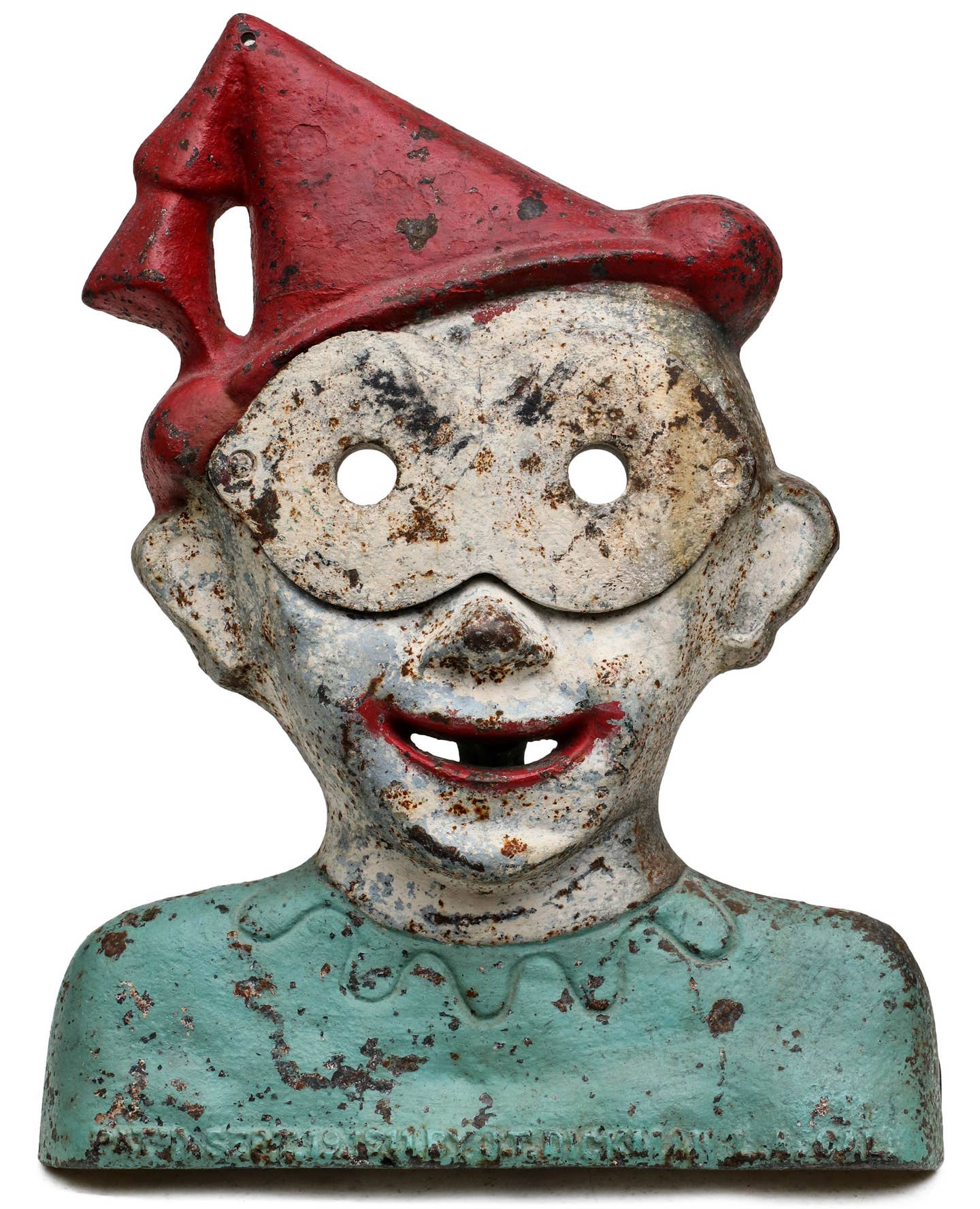
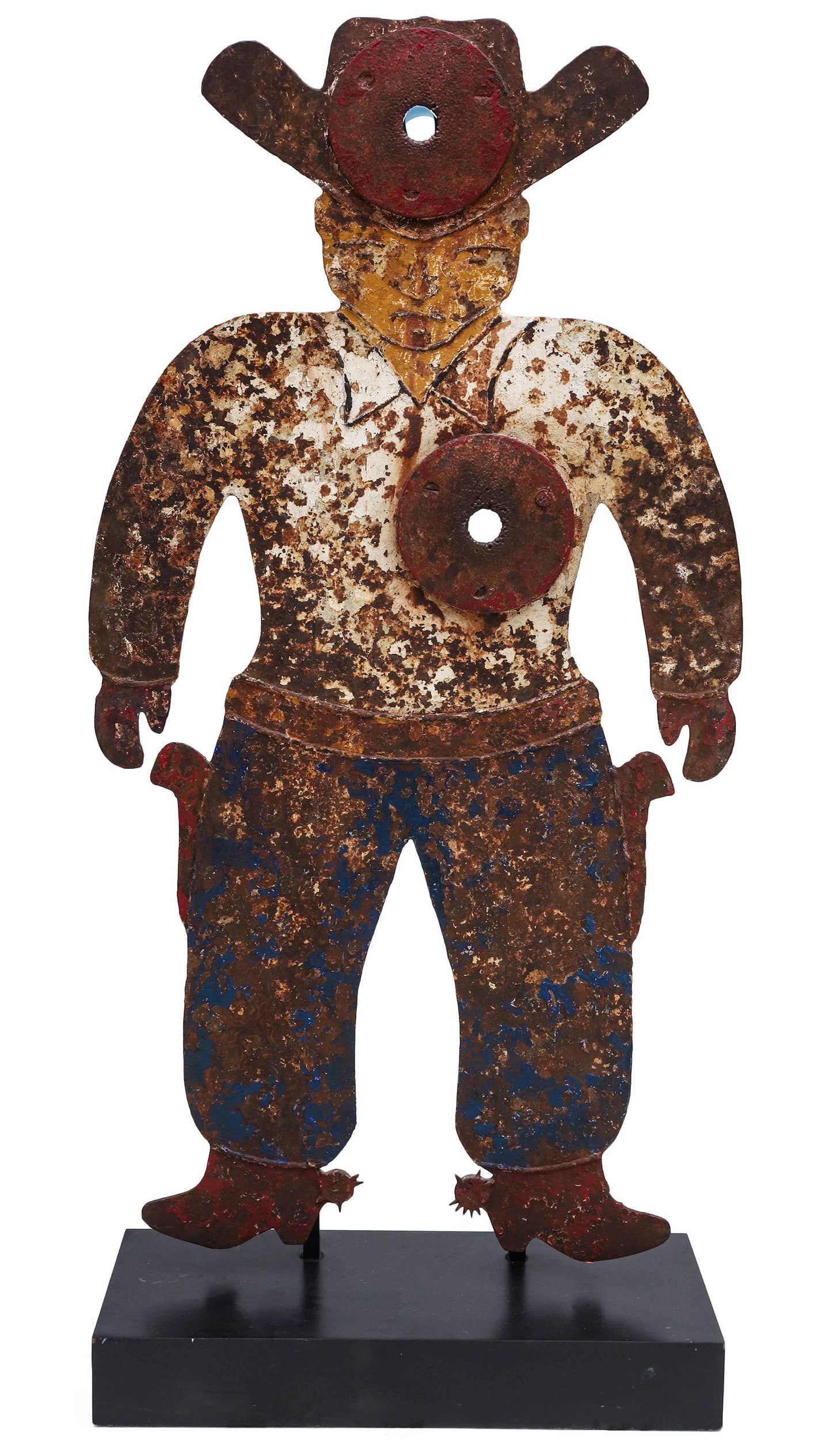
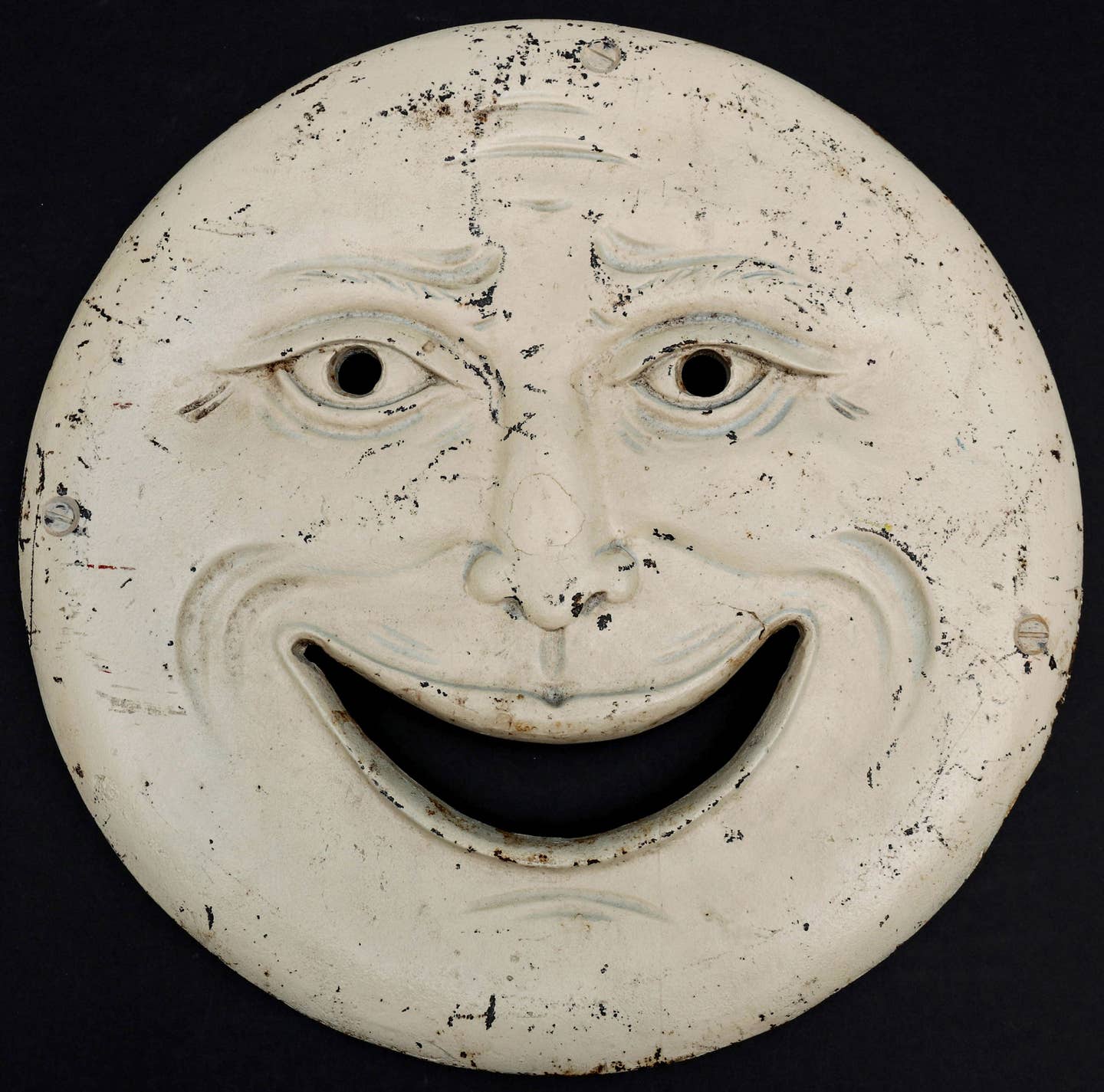
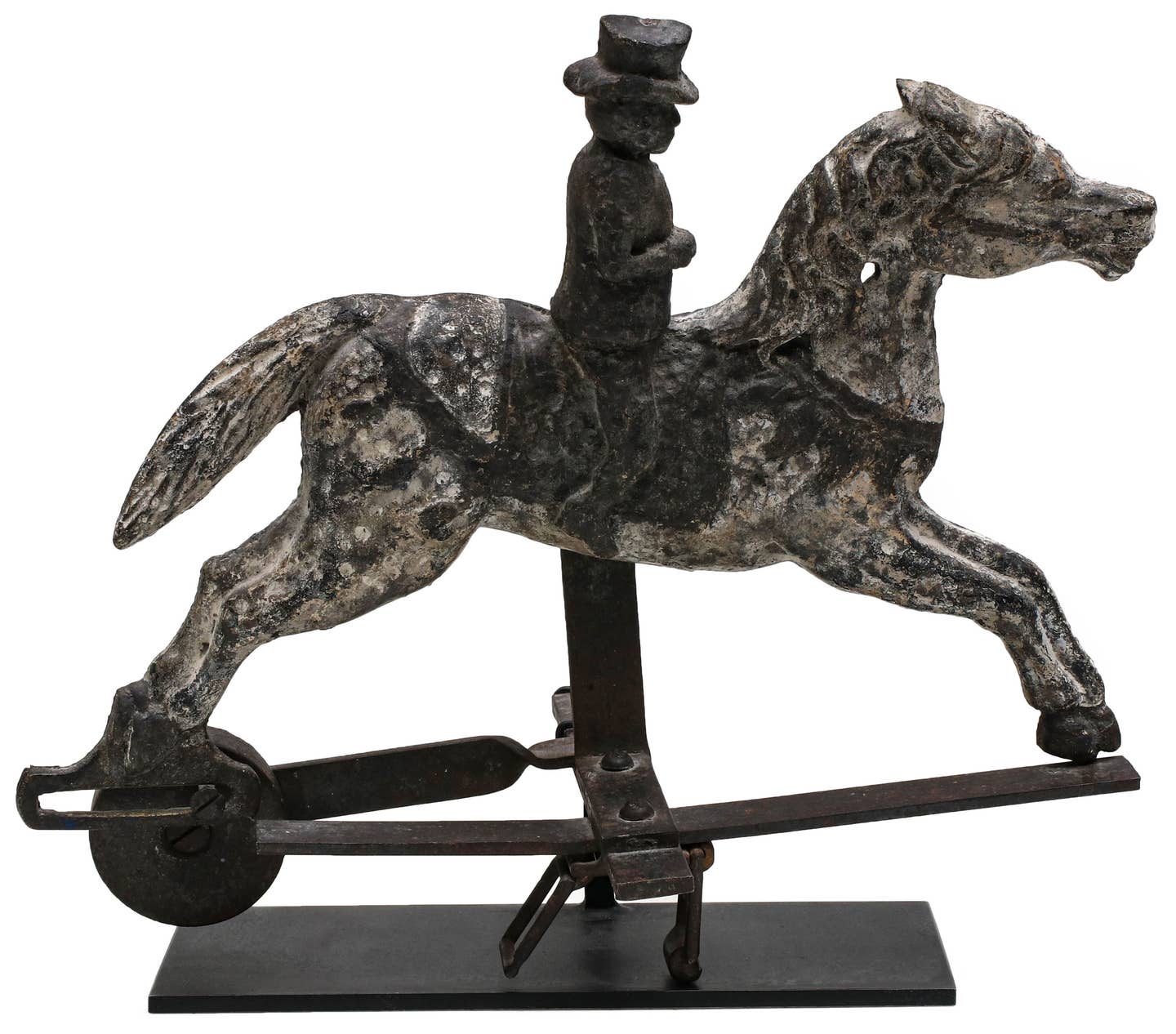
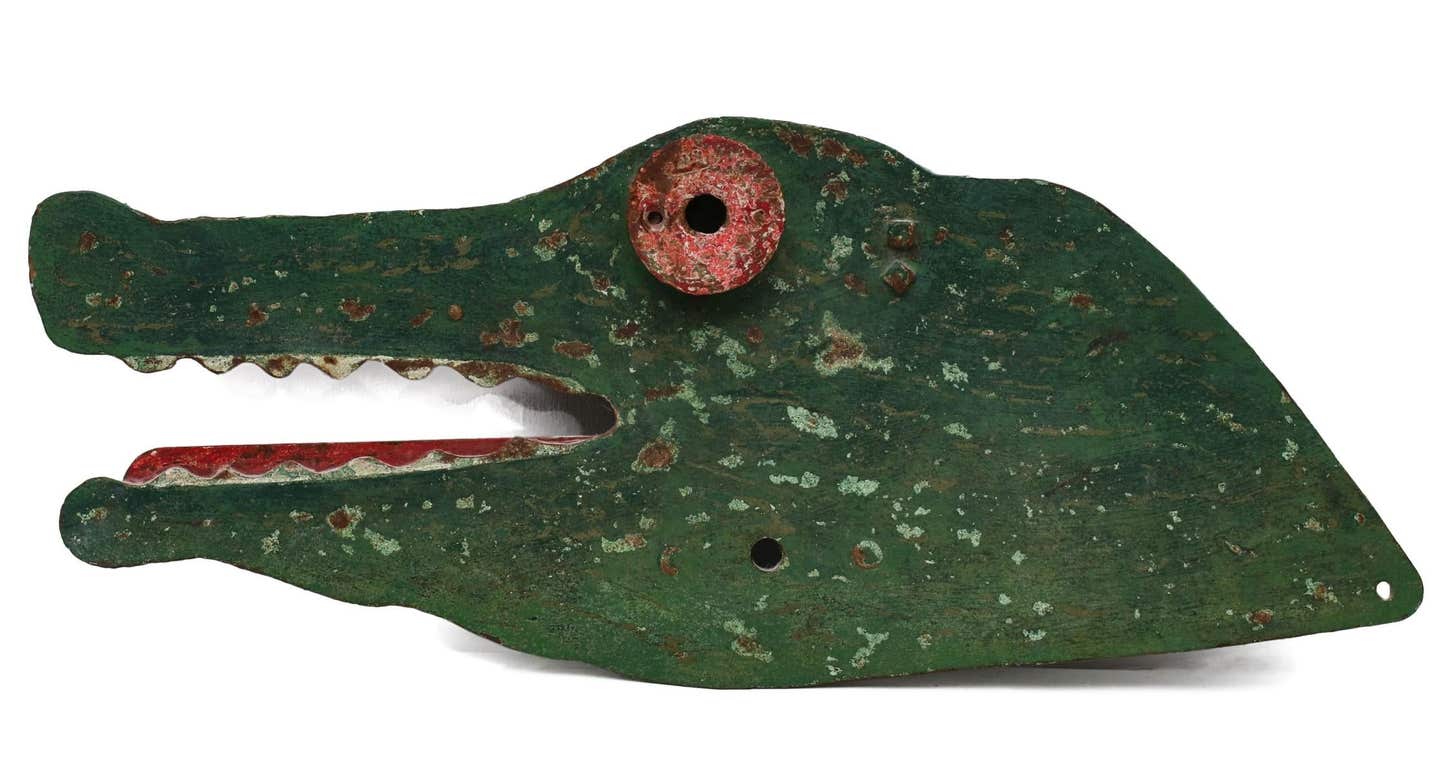
Known far and wide in the hobby from its appearance on the cover of Step Right Up!, a 1911-patented J.T. Dickman (Los Angeles) cast-iron clown target is one of five known and the only one in an aqua, red and white paint scheme. Impressively sized at 20 1/4 by 15 inches, the amusing masked-character target appeared in Dickman’s 1921 Catalog E and was identified as “The Great Clown Target with the Bright Eye.” Estimate: $25,000-$35,000
Another Mangels production and possibly the king of all American shooting gallery targets, “Shorty” is a 53-inch depiction of a bowlegged gunfighter with his hands poised as though ready to draw his six-guns. The figure wears jeans and boots with spurs, and has a target on both his cowboy hat and Western-style shirt. Like the aforementioned “Rowdy,” this early twentieth-century classic is featured in the book American Vernacular. It is expected to make $20,000-$30,000.
Two very rare and unusual C.W. Parker rocking targets – a lion, $3,000-$5,000, and a top-hatted rider on a horse, $6,000-$8,000 – still have their rocking mechanisms intact, making them especially desirable. A Kansas firm, C.W. Parker was primarily known for its carousels and horses but also gained renown for its artful targets. The Tucker collection includes many Parker designs, including a dog, deer, rabbit, goats, an articulated owl, $7,000-$9,000; a curious giraffe with knock-down rider, $3,000-$4,500; a lion with a heart-shape target release, and a beautiful, pre-1910 folk-art interpretation of an Indian princess wearing a war bonnet, $7,000-$10,000.
Attributed to William Wurfflein (Philadelphia), an outstanding rooster figure is pure Americana with its red comb and wattle, fanned and delineated tail feathers adorned by a single cut-out spring-loaded star, and contrasting target of concentric circles. Its paint is all original and its overall appearance is very similar to that of images in Wurfflein’s March 1901 catalog and price lists. The only known example of its type, the rooster could command $4,000-$6,000.
Moonlight will be shining down on the auction in the form of two targets designed as smiling caricatures of the “Man in the Moon.” The first, manufactured circa 1912 by Emil Hoffmann of Chicago, has a bright red open mouth, toothy grin, and eyes that suggest a playful personality. An iron gong on its reverse side was designed to sound a tone when the target is struck. The second Man in the Moon was produced by H.C. Evans company in the first quarter of the twentieth century and, like the Hoffmann example, exhibits a level of realistic detailing not typically seen on shooting gallery targets. Each of the moon lots carries a $6,000-$8,000 estimate.
The Saturday, September 26, 2020, live gallery auction is limited to 50 guests who must pre-register. Masks at the live gallery are mandatory and social distancing is required. The auction will begin at 11 a.m. at 529 W. Lone Jack Lee’s Summit Rd., Lone Jack (suburban Kansas City), Missouri.
Remote bidding is available through LiveAuctioneers, Bidsquare or Invaluable.
To reserve a phone line, gallery seat or drive-in car space, to make an appointment to preview the collection, or to obtain additional information about any item in the auction, call 816-697-3830 or email Dirk@SoulisAuctions.com. View the online catalog at www.LiveAuctioneers.com.






